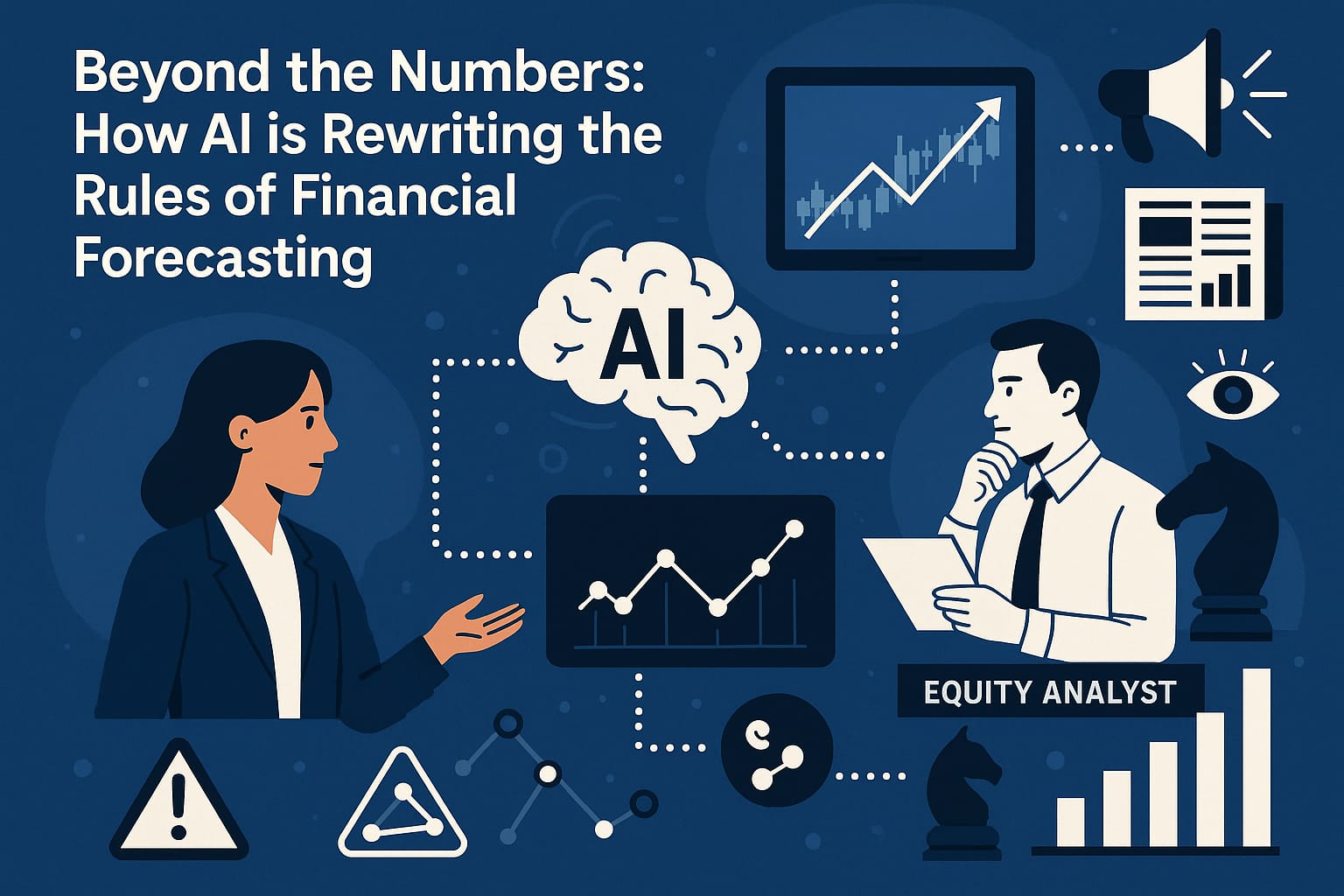Navigating the Future of AI with Comparative Analysis of EY’s Corporate Leadership and the EU’s Regulatory Framework
Artificial Intelligence (AI) is more than just a technological advancement; it is an evolving force, reshaping industries, economies, and societies at a pace few could have predicted. Its rapid growth brings not only transformative potential but also profound ethical, social, and economic challenges. In this landscape, both private corporations and public institutions play crucial roles in fostering AI innovation while ensuring its responsible and ethical use. Two key players—EY (Ernst & Young), a leader in the corporate sphere, and the European Union (EU), a global regulatory pioneer—stand at the forefront of shaping the future of AI. Through a mix of strategic corporate leadership and bold regulatory initiatives, they present complementary approaches to navigating the complexities of AI governance.
This article looks into their respective strategies, illustrating how EY’s focus on AI-driven transformation complements the EU’s regulatory framework designed to safeguard citizens and promote ethical AI deployment.

1. EY’s Corporate Leadership in AI
EY has positioned itself as a vanguard in the corporate world’s adoption and implementation of AI technologies. As one of the “Big Four” professional services firms, EY not only uses AI internally to drive its own transformation but also partners with businesses across industries, helping them navigate the AI revolution. Its multi-faceted approach highlights innovation, responsibility, and sustainability.
a) EY.ai Platform
At the heart of EY’s AI strategy is the creation of EY.ai, a platform that leverages AI to drive transformation across a variety of sectors. This platform is designed to be a hub for industry-wide AI solutions, providing cutting-edge tools for sectors ranging from healthcare to manufacturing. EY’s partnerships, such as its collaboration with NVIDIA, bring high-performance computing and AI solutions directly to businesses, enhancing their ability to implement sophisticated AI applications.
A key focus for EY is Generative AI (GenAI), which enables businesses to scale AI solutions rapidly and with flexibility. GenAI is employed to streamline operations, optimize decision-making processes, and create highly personalized customer experiences, ultimately helping businesses stay competitive in an increasingly AI-driven marketplace. EY’s approach highlights the power of AI as a transformative tool, but one that requires thoughtful implementation to ensure sustainable, long-term value.
b) Responsible AI Governance
While innovation is a priority for EY, it is equally committed to ensuring that AI is used ethically and responsibly. Responsible AI Governance is a cornerstone of its strategy. With frameworks that emphasize transparency, accountability, and bias mitigation, EY helps businesses navigate the complex moral and legal terrain of AI deployment. Through governance tools such as WatsonX Governance, EY ensures that businesses can adopt AI with confidence, knowing they are adhering to the highest standards of ethical use.
EY’s commitment to responsible AI goes beyond just compliance; it aims to augment human capabilities, not replace them. This strategy aligns with the broader goal of building trust in AI systems, ensuring that they are used to enhance, rather than undermine, human decision-making.
c) AI for Sustainability
In an era of heightened environmental awareness, EY has recognized the potential for AI to be a catalyst for global sustainability. Through the integration of AI into systems that manage resources and environmental data, EY helps companies accelerate their sustainability initiatives. AI’s capacity to analyze vast amounts of data quickly and accurately allows businesses to optimize resource management, reduce waste, and minimize their environmental impact.
EY’s focus on AI for sustainability underscores a broader vision of AI as a tool that not only drives economic efficiency but also addresses global challenges, such as climate change. This vision positions AI as a vital component of future environmental strategies, ensuring that technological progress is aligned with the goals of sustainable development.

2. The EU’s Bold Regulatory Framework
While EY leads the corporate adoption of AI, the European Union has taken a global leadership role in regulating AI to ensure its ethical deployment. The EU’s AI Act, adopted in 2024, is the world’s first comprehensive legal framework to regulate AI technologies. This bold move reflects the EU’s commitment to fostering innovation while safeguarding citizens from potential AI-related risks. The Act aims to create a balance between encouraging technological progress and protecting fundamental rights, such as privacy and freedom from discrimination.
a) Risk-Based Classification
One of the key elements of the AI Act is its risk-based approach to AI governance. The framework categorizes AI systems into four levels of risk: minimal, limited, high, and unacceptable. This classification allows the EU to apply tailored regulatory measures based on the potential impact of each system.
AI systems deemed high-risk, such as those used in healthcare, law enforcement, or education, are subject to stringent requirements regarding data quality, transparency, and human oversight. At the other end of the spectrum, systems considered to pose an unacceptable risk, such as AI used for social scoring, are banned outright. This risk-based approach ensures that the most powerful and potentially harmful AI systems are subject to the highest levels of scrutiny and control.
b) Transparency and Accountability
Transparency is a central pillar of the AI Act. AI systems that interact with users, such as chatbots and recommendation engines, must clearly disclose that users are interacting with machines, ensuring transparency in AI-human interactions. Additionally, high-risk AI systems must comply with stringent reporting and documentation requirements, promoting accountability across industries. This emphasis on transparency not only protects consumers but also ensures that businesses deploying AI technologies are held to rigorous standards of ethical use.
c) Regulating Generative AI
The EU has also taken steps to regulate Generative AI, including powerful models like ChatGPT and similar large-scale AI systems. These systems, which have the capacity to generate content, are required to provide detailed documentation on their training data and ensure compliance with copyright laws. This is a significant move toward balancing innovation with safety, ensuring that AI’s creative capabilities are used responsibly.
d) Biometric Surveillance and Privacy Concerns
A particularly contentious issue in the realm of AI governance is the use of AI for biometric surveillance, such as real-time facial recognition. The AI Act places strict limits on the use of such technologies, permitting them only in specific, narrowly defined circumstances, such as in the fight against terrorism. By heavily restricting the use of AI for mass surveillance, the EU aims to protect citizens’ privacy and prevent the misuse of AI for invasive monitoring practices.
3. Comparing EY’s Corporate Strategy and the EU’s Regulatory Approach
a) Innovation vs. Regulation
At the heart of the comparison between EY’s corporate strategy and the EU’s regulatory approach lies the tension between innovation and regulation. EY’s approach is centered on pushing the boundaries of AI adoption, helping businesses leverage AI’s transformative potential for growth and efficiency. On the other hand, the EU’s AI Act seeks to mitigate risks associated with AI, particularly around issues of privacy, transparency, and human rights.
While EY promotes the use of tools like Generative AI to enhance business operations, the EU’s framework ensures that such tools are deployed responsibly, with safeguards to protect citizens from unintended consequences.
b) Responsible Use of AI
Both EY and the EU share a commitment to the responsible use of AI, but their approaches differ. EY’s governance frameworks provide businesses with tools to implement AI in ethical ways, focusing on building trust and ensuring the safety of AI systems. The EU’s AI Act, meanwhile, mandates transparency and human oversight for high-risk systems, ensuring that businesses are held accountable for the ethical deployment of AI. Both approaches reflect a shared understanding of AI’s dual nature: as a tool of immense potential and one that requires careful oversight to prevent harm.
c) Global Impact
EY’s AI strategy has far-reaching implications for businesses worldwide, particularly in industries such as healthcare, finance, and energy. By contrast, the EU’s AI Act is likely to have a global regulatory impact, setting a precedent much like the General Data Protection Regulation (GDPR) did for data privacy. Both EY and the EU are shaping the future of AI, influencing not only corporate strategies but also the public policies that govern AI’s development and deployment.
Conclusion
As AI continues to reshape industries and societies, the approaches taken by both EY and the European Union provide valuable insights into the future of AI governance. EY’s focus on innovation, sustainability, and responsible AI adoption stands in contrast to the EU’s robust regulatory framework, designed to protect citizens and uphold human rights. Together, these strategies offer a balanced blueprint for harnessing AI’s transformative power while mitigating its risks. For businesses and policymakers alike, the paths charted by EY and the EU serve as guiding lights in the ever-evolving AI landscape.
Lexicon that highlights essential terms to understand the context
Here is a lexicon that highlights essential terms to understand the context of AI applications and regulations as discussed in the examples of EY and the European Union’s AI initiatives:
AI Lexicon for Corporate Strategy and Regulation
- Generative AI (GenAI):
- Definition: A subset of artificial intelligence that involves models capable of generating new content (text, images, video, etc.) based on patterns learned from existing data.
- Context: EY heavily invests in GenAI to enhance business processes, while the EU regulates its usage to ensure transparency and copyright compliance EY
European Commission
.
- Risk-Based Classification:
- Definition: A regulatory approach that categorizes AI systems into different risk levels (minimal, limited, high, unacceptable), dictating the level of regulation they must comply with.
- Context: Central to the EU’s AI Act, this classification system ensures that high-risk AI, like systems used in healthcare, follows stringent rules, while minimal-risk AI like video games faces lighter regulation European Commission
World Economic Forum
.
- High-Risk AI Systems:
- Definition: AI systems that have significant implications for individuals’ health, safety, or rights, such as AI used in medical devices or hiring processes.
- Context: Both EY’s responsible AI frameworks and the EU’s regulations impose strict governance on these systems to ensure compliance with ethical standards EY
European Commission
.
- Transparency Requirements:
- Definition: Obligations for AI systems to disclose to users when they are interacting with AI or when content has been generated by AI.
- Context: The EU’s AI Act mandates transparency, particularly for chatbots and AI-generated content, to prevent misuse or manipulation European Commission
.
- AI Governance:
- Definition: The frameworks and practices ensuring that AI is used ethically and responsibly, managing risks such as bias, discrimination, and lack of transparency.
- Context: EY provides tools for businesses to implement AI governance, aligning with their goals for responsible AI deployment, while the EU’s AI Act includes governance provisions to ensure safe AI use EY
TechRepublic
.
- General-Purpose AI (GPAI):
- Definition: Broad AI systems capable of performing a wide range of tasks, as opposed to specialized AI designed for specific functions.
- Context: The EU is developing a Code of Practice to regulate GPAI models like ChatGPT, with a focus on transparency, risk management, and legal compliance European Commission
European Commission
.
- AI-Enabled Biometric Surveillance:
- Definition: The use of AI technologies such as facial recognition to monitor and track individuals, often in real-time.
- Context: The EU imposes strict limits on the use of biometric surveillance, permitting it only in cases involving serious threats, while protecting fundamental rights World Economic Forum
European Commission
.
- Ethical AI:
- Definition: The concept of designing, deploying, and using AI systems in ways that are fair, transparent, and do not harm individuals or society.
- Context: Both EY’s AI solutions and the EU’s regulatory frameworks emphasize the importance of ethical AI practices to avoid bias and ensure fairness in decision-making EY
World Economic Forum
.
- Social Scoring:
- Definition: The use of AI to evaluate individuals based on their behaviors, often used to grant or deny access to services or benefits.
- Context: The EU has banned AI systems that involve social scoring due to the significant risks they pose to fundamental rights European Commission
World Economic Forum
.
- Human Oversight:
- Definition: A requirement in AI governance that ensures humans remain involved in critical decision-making processes when using AI systems.
- Context: High-risk AI systems regulated by the EU must incorporate human oversight to avoid fully automated decisions that could impact health, safety, or rights European Commission
European Commission
.
Conclusion
These terms form the foundation of the ongoing dialogue surrounding AI applications in business and regulation. Understanding them is crucial to comprehending how organizations like EY and governments, such as the EU, are navigating AI’s transformative impact responsibly.
Online ressources for those who want to deepen the context of the article
To deepen your understanding of the interplay between AI applications in business and regulations, here are some of the best online resources that provide rich, in-depth insights:
1. European Commission’s AI Act Documentation
- Content: The European Commission’s official resources offer detailed information on the AI Act, including FAQs, legal texts, and guidance on compliance. These documents are crucial for understanding the regulatory landscape in the EU.
- Link: European Commission – AI Act European Commission
.
2. World Economic Forum – AI Governance
- Content: The World Economic Forum discusses global standards for AI governance, including the EU’s leadership in regulating AI and comparisons with other global initiatives. This is a great resource for understanding the broader impact of AI regulation on businesses worldwide.
- Link: World Economic Forum – AI Governance World Economic Forum.
3. EY Insights on AI and Technology
- Content: EY provides comprehensive reports, podcasts, and articles on AI’s role in business transformation, sustainability, and governance. Their platform is a valuable resource for professionals interested in AI applications in industries like healthcare, finance, and more.
- Link: EY Insights – AI EY EY.
4. AI Now Institute
- Content: AI Now Institute is a leading research institute that focuses on the social and ethical implications of AI. It provides in-depth reports and policy recommendations on AI governance, including transparency, bias, and accountability.
- Link: AI Now Institute.
5. European Digital Rights (EDRi)
- Content: EDRi focuses on digital rights in Europe, including critiques of the AI Act. They provide resources and analysis on AI’s implications for privacy and civil liberties, offering an alternative perspective on regulation.
- Link: EDRi – Artificial Intelligence TechRepublic
.
6. Stanford University – Human-Centered AI (HAI)
- Content: Stanford HAI provides academic research and reports on the ethical use of AI, focusing on responsible innovation, human-centered design, and AI’s societal impacts. Their resources are ideal for a deep dive into ethical AI frameworks.
- Link: Stanford HAI.
7. OECD AI Policy Observatory
- Content: The OECD AI Policy Observatory provides data and insights on AI policies across different countries, including the EU’s AI regulations. This is a useful resource for comparing regulatory frameworks globally.
- Link: OECD AI Policy Observatory.
8. Future of Life Institute
- Content: The Future of Life Institute focuses on the safety and governance of AI, offering articles, podcasts, and resources on preventing AI risks, including regulatory recommendations. It is an important resource for those interested in AI’s long-term societal impacts.
- Link: Future of Life Institute.
These resources provide a well-rounded view of both AI’s practical applications and its regulatory challenges, making them ideal for anyone looking to explore the subject further.

I hope you found the information helpful.
If you need further clarification or more resources in the future, feel free to ask. Happy exploration!





